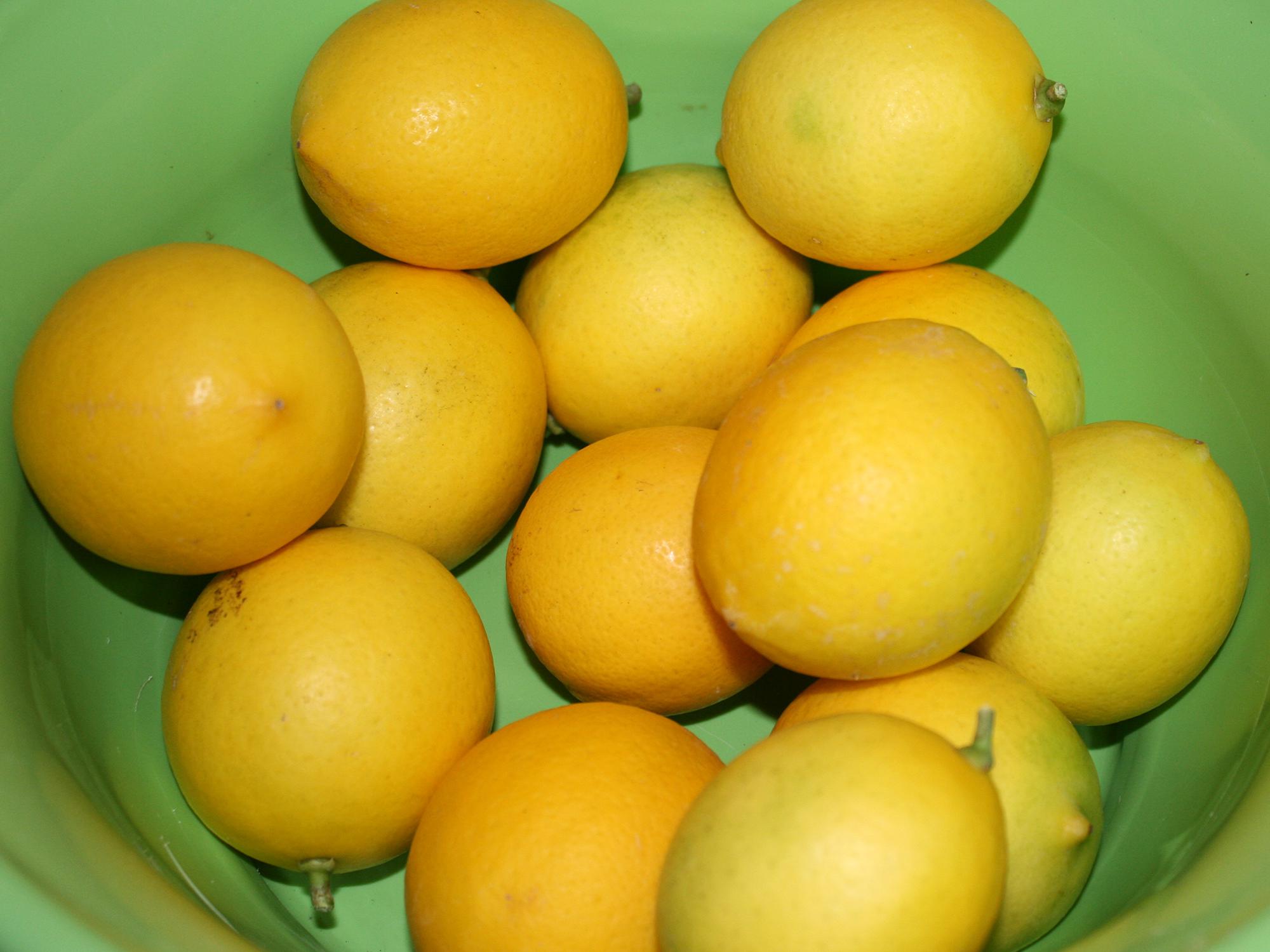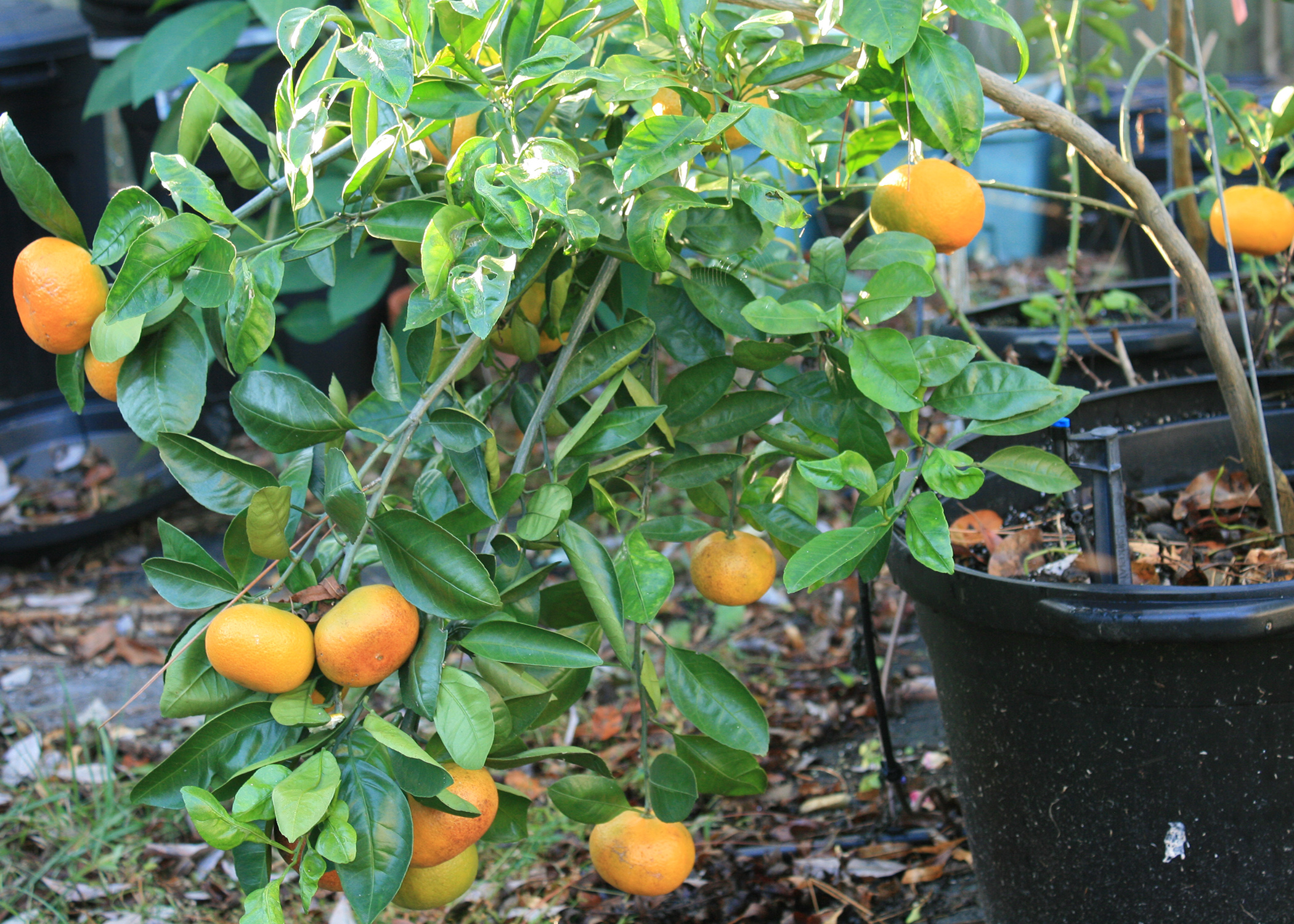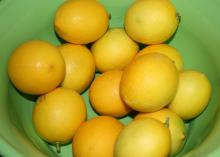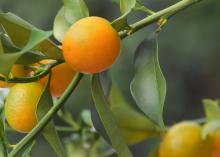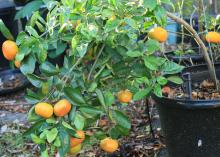Information Possibly Outdated
The information presented on this page was originally released on August 7, 2017. It may not be outdated, but please search our site for more current information. If you plan to quote or reference this information in a publication, please check with the Extension specialist or author before proceeding.
Summer citrus growth brings autumn harvest
Although we’re in the middle of a blazing hot summer, I find my gardening thoughts wandering to the coming fall season. You may think you know why I'm looking forward to the cooler weather, but the main reason is that the citrus in my home grove will start to ripen.
While August is too early to think about harvesting fruit, it is time to start thinking about planting your own citrus. You can plant citrus in the ground or, my preferred method, in containers.
I’ve written before about the various citrus trees that I’ve tried to grow in the past. I’ve told of being unable to resist a key lime I saw in the garden center, but it didn’t survive the “brutal” coastal Mississippi winter. I’ve tried growing the eerily fascinating Buddha’s hand citron, but it also didn’t make it past winter.
I’ve finally learned to grow citrus that is hardy for my garden with minimal cold protection. I’ve settled on three consistent performers: satsuma orange, Meyer lemon and kumquat.
Satsuma oranges are related to mandarins and are winter favorites because they are easy to peel. I’m always astonished at the number of oranges that will be set on my satsuma trees. My first year growing this citrus, there were so many flowers on my little tree I went ahead and removed about half because if they all had produced a fruit, the tree would have snapped. As it was, my little tree had 13 oranges that almost bent the trunk to the ground.
I enjoy growing and caring for Meyer lemons, which are not like the tart, thick-skinned grocery store offerings. This fruit -- long-overlooked in the culinary world -- is a cross between a lemon and an orange, making it thin-skinned and really sweet. Each year, my crop is destined for a batch of homemade limoncello, which is a holiday family treat.
The citrus crop I’m most excited about are the kumquats. These fruits are produced in astonishing numbers; because of the number of flowers, my trees are buzzing with what seems like hundreds of native bumblebees. The number of kumquats developing would seem to cause a structural problem for the trees as they ripen, but it’ll be OK. Due to their small size, the weight will not threaten the tree.
Kumquats don’t need to be peeled, as the rind is completely edible. I have two varieties; one is sweet, and the other is a little tart. Kumquats are perhaps the most cold tolerant of the citruses, extending the northern range for home gardeners.
Citrus must be protected from the cold. Citrus trees are grafted, and the graft union is susceptible to freeze damage. I planted all my citrus trees in 25-gallon containers so I could move them to the garage for protection. However, the containers weigh too much to actually move. My mistake. So, I constructed removable conduit frames from which I hang frost blankets on the coldest nights.
If you want more information about growing citrus, especially in containers, get Mississippi State University Extension Service Publication 2542, “Growing Citrus in Containers in Mississippi.” This is an excellent guide for gardening success with citrus in your landscape. Find it at http://extension.msstate.edu/sites/default/files/publications/publications/p2542.pdf.
For now, I’ll just have to be satisfied with the visions of homemade limoncello while I wait out the rest of the summer in air conditioning.

